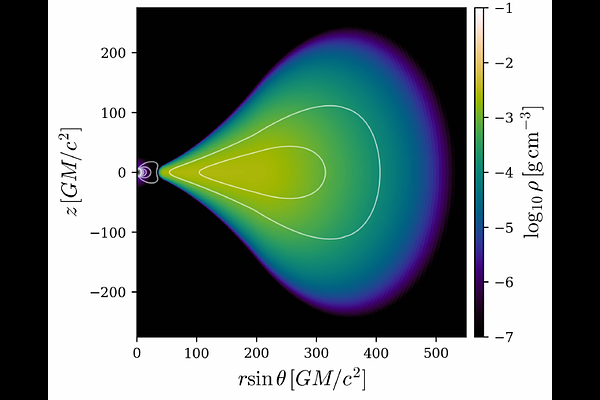ULX collimation by outflows in moderately magnetized neutron stars

ULX collimation by outflows in moderately magnetized neutron stars
Fatemeh Kayanikhoo, Włodek Kluźniak, Miljenko Čemeljić
AbstractWe perform radiative magnetohydrodynamics simulations in general relativity (GRRMHD) of super-Eddington disk accretion onto neutron stars endowed with a magnetic dipole corresponding to surface strengths not exceeding 100 GigaGauss. Accretion is found to power strong outflows which collimate the emergent radiation of the accretion columns, leading to apparent radiative luminosities of $\sim 100$ Eddington, when the true luminosity is a few Eddington units. Surprisingly, the collimation cone/angle widens with increasing magnetic field. Thus, in our simulations the apparent luminosity of the neutron star is substantially larger for the weaker magnetic fields ($10^{10}\,$G) than for the stronger ones ($10^{11}\,$G). We conclude that a super-Eddington accreting neutron star with the dipole magnetic field $10^{10}\,$G is the most likely source of ultraluminous X-rays.